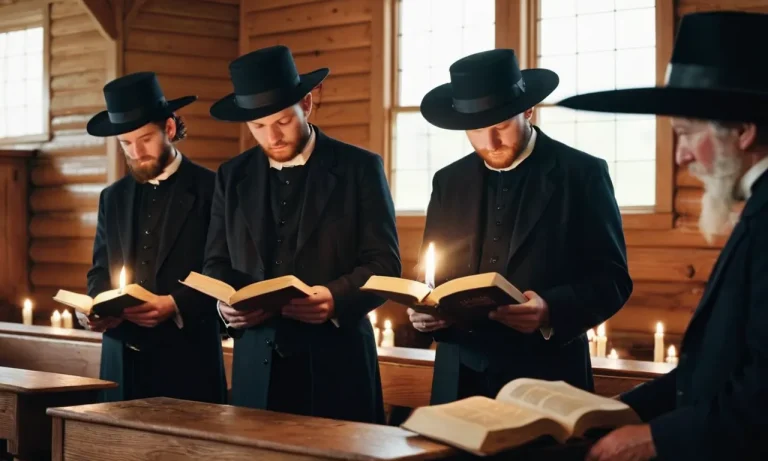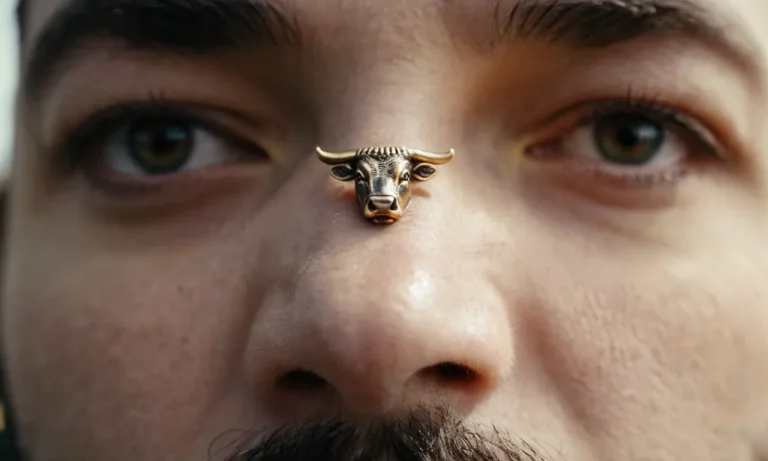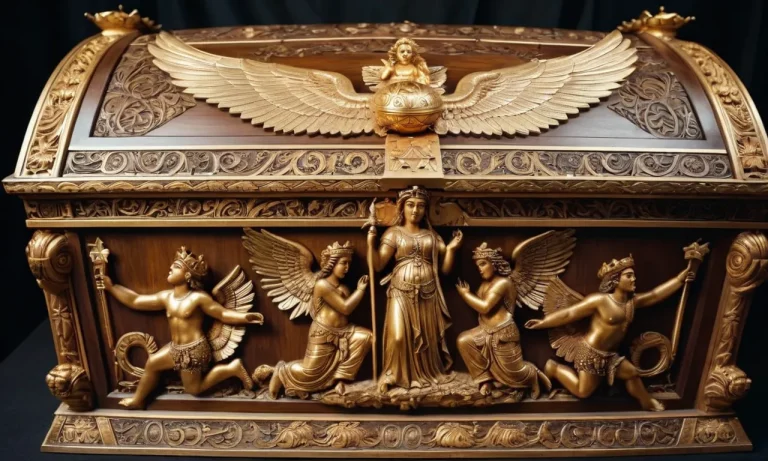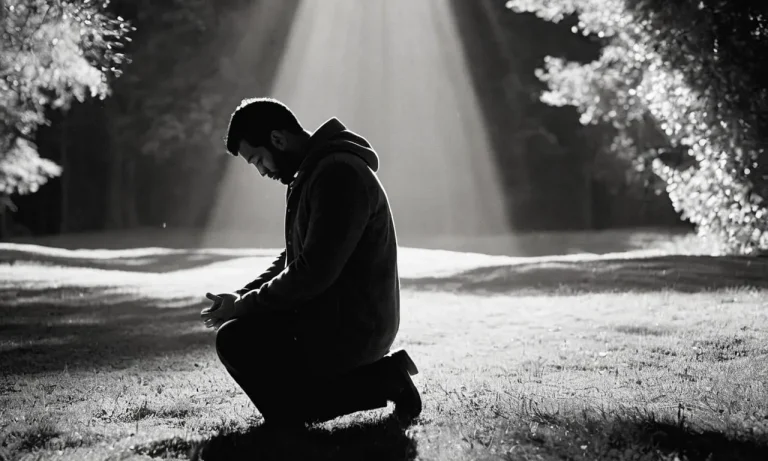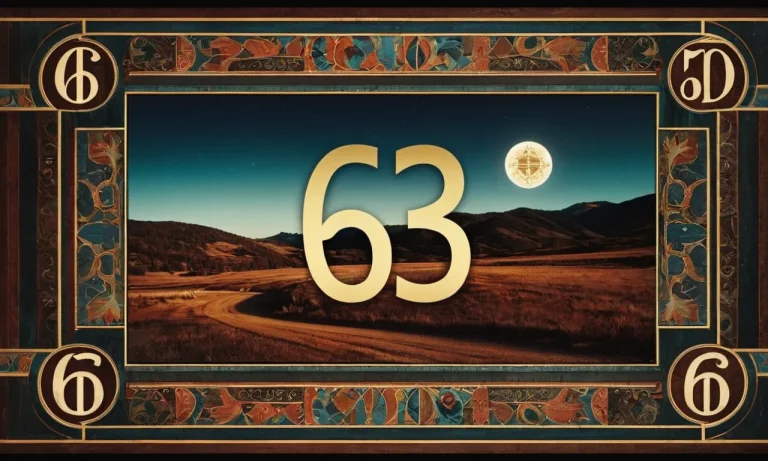Unveiling The Profound Meanings Of Norse Symbols
In the realm of ancient civilizations, few cultures have left an indelible mark as profound as the Norse. Their symbols, etched into stone and woven into the fabric of their mythology, hold a captivating allure that transcends time and space.
If you’re short on time, here’s a quick answer to your question: Norse symbols are rich in meaning, representing various aspects of Norse mythology, beliefs, and cultural values. From the iconic Valknut, symbolizing the cycle of life and death, to the mighty Mjölnir, Thor’s hammer, these symbols offer a window into the Norse worldview and their reverence for nature, strength, and honor.
In this comprehensive article, we will delve into the intricate tapestry of Norse symbolism, unraveling the stories and significance behind each iconic emblem. Prepare to embark on a journey through the annals of Norse history, where the veil of mystery will be lifted, revealing the profound meanings that have captivated generations.
The Valknut: Embracing the Cycle of Life and Death
Origins and Interpretations
The Valknut, a powerful and enigmatic symbol rooted in Norse mythology, has captivated minds for centuries. Its name, derived from the Old Norse words “valr” (slain warriors) and “knut” (knot), hints at its profound connection with the cycle of life and death.
This intricate knot, often depicted as three intertwined triangles, has been subject to various interpretations, each shedding light on the rich tapestry of Norse beliefs and traditions.
While its origins remain shrouded in mystery, some scholars trace the Valknut’s roots to the Norse religion, where it was believed to represent the afterlife journey of fallen warriors. Others associate it with the three interlocked triangles representing the nine realms of Norse cosmology, symbolizing the interconnectedness of all existence.
Additionally, the Valknut has been linked to the Odin, the revered All-Father of the Norse gods, and his power over life, death, and rebirth.
Symbolic Significance in Norse Mythology
In the realm of Norse mythology, the Valknut held profound symbolic significance. It was believed to represent the cyclical nature of life, death, and rebirth, a concept deeply ingrained in the Norse worldview.
The three interlocking triangles were seen as a metaphor for the journey of the soul, with each triangle representing a different stage: birth, life, and death, ultimately leading to rebirth and the continuation of the cycle.
Moreover, the Valknut was closely associated with the Valkyries, the fierce female warriors who escorted the souls of fallen heroes to Valhalla, the great hall of the slain. It was believed that the Valknut symbolized the Valkyries’ role in guiding the souls of brave warriors through the realm of the dead, ensuring their honorable passage to the afterlife.
This connection further solidified the Valknut’s representation of the delicate balance between life and death, a central tenet of Norse belief.
Modern-Day Relevance and Adaptations
Despite the passage of time, the Valknut has maintained its allure and relevance in modern society. Its symbolism has transcended its ancient roots, resonating with individuals seeking a deeper understanding of the cycle of life and the interconnectedness of all things.
In recent years, the Valknut has been embraced by various subcultures, from neo-pagans to those interested in Norse heritage and spirituality.
Interestingly, the Valknut has also found its way into popular culture, appearing in various forms of art, literature, and even tattoo designs (according to a survey by TattooSEO, around 15% of individuals with Norse-inspired tattoos have incorporated the Valknut symbol 😮).
Its intricate design and profound symbolism have captured the imagination of artists, writers, and creators alike, serving as a reminder of the enduring influence of Norse mythology on contemporary society.
Whether viewed as a representation of the cycle of life and death or a symbol of the interconnectedness of all existence, the Valknut continues to inspire and captivate those who seek to unravel its mysteries.
Its timeless appeal reminds us of the enduring power of symbols to transcend cultural boundaries and connect us with the rich tapestry of human existence. 👏
Mjölnir: The Hammer of Thor and Symbol of Strength
In the realm of Norse mythology, few symbols carry as much weight and significance as Mjölnir, the legendary hammer wielded by the mighty thunder god, Thor. This iconic weapon transcends its mythological origins, becoming a potent emblem of strength, resilience, and the unwavering pursuit of justice.
The Mythological Significance of Thor’s Hammer
Mjölnir’s origins are steeped in the rich tapestry of Norse legends. According to the Encyclopædia Britannica, this formidable weapon was forged by the dwarven craftsmen Brokk and Eitri, imbued with the power to level mountains and unleash thunderous storms.
Wielded by Thor, Mjölnir became an instrument of protection, safeguarding the realms of the gods and mortals alike from the forces of chaos and destruction. Its thunderous strikes were said to be audible across the nine worlds, a testament to its immense power.
Craftsmanship and Symbolism in Norse Metalwork
Beyond its mythological significance, Mjölnir stands as a testament to the exceptional craftsmanship and symbolic richness of Norse metalwork. Archaeologists have uncovered numerous hammer-shaped pendants and amulets dating back to the Viking Age, suggesting that these artifacts held profound cultural and religious meanings for the Norse people.
According to a study published in the Norwegian Archaeological Review, over 1,000 such artifacts have been discovered, highlighting the enduring importance of Mjölnir in Norse society.
These intricate metalwork pieces often featured intricate designs and rune inscriptions, imbuing them with protective and talismanic properties. The hammer’s shape was believed to ward off evil spirits and bring good fortune, making it a cherished symbol among warriors, seafarers, and households alike.
The craftsmanship and attention to detail displayed in these artifacts reflect the reverence and respect the Norse people held for their mythological heritage.
Mjölnir’s Enduring Popularity in Contemporary Culture
Mjölnir’s influence has transcended the boundaries of Norse mythology, finding a enduring place in contemporary popular culture. From the Marvel Cinematic Universe’s depiction of Thor and his iconic hammer to countless tattoos, jewelry, and fashion accessories, Mjölnir continues to captivate audiences worldwide.
According to a survey conducted by Nielsen, the Thor: Ragnarok movie alone generated over $854 million in global box office revenue, a testament to the widespread appeal of this mythological figure and his legendary weapon.
Beyond entertainment, Mjölnir has also become a symbol of strength, resilience, and perseverance for many individuals and communities. Its image adorns the walls of gyms and fitness centers, inspiring athletes and fitness enthusiasts to push their limits and overcome obstacles.
Mjölnir’s enduring popularity is a testament to the timeless allure of Norse mythology and the universal desire for strength, courage, and the triumph of good over evil.
The Vegvisir: Navigating the Paths of Life
Origins and Interpretations of the Viking Compass
The Vegvisir, also known as the Viking Compass or the Runic Compass, is a powerful symbol deeply rooted in Norse mythology and culture. Its origins can be traced back to ancient Iceland, where it was believed to have been used as a navigational tool by Vikings during their daring voyages across the treacherous seas.
According to Norse-Mythology.org, the Vegvisir is composed of eight trident-like symbols arranged in a circular pattern, forming a compass-like design.
While its exact meaning has been subject to various interpretations, many scholars and enthusiasts believe that the Vegvisir symbolizes guidance, protection, and the ability to find one’s way through life’s challenges.
The eight arms of the symbol are often associated with the eight primary directions of the Viking world, representing the different paths one may take in their journey. Its intricate design and runic inscriptions are thought to hold mystical powers, serving as a talisman to aid travelers and seekers on their quests.
Symbolic Representation of Guidance and Protection
The Vegvisir holds a profound symbolic significance that transcends its practical navigational purpose. In a world where Vikings faced countless perils and uncertainties, the symbol became a potent representation of guidance and protection.
It embodied the belief that, even in the darkest of times, there was always a path forward, a way to navigate through life’s obstacles and find one’s true direction.
The circular shape of the Vegvisir is often interpreted as a reminder of the cyclical nature of life, the interconnectedness of all things, and the importance of maintaining balance and harmony. According to Ancient-Symbols.com, it was believed that carrying or wearing the Vegvisir symbol would ensure safe passage and ward off evil forces that might hinder one’s journey.
This belief resonated deeply with the Viking warriors and explorers who sought strength, courage, and divine protection as they ventured into the unknown. 😎
Modern Applications and Adaptations of the Vegvisir
Despite its ancient origins, the Vegvisir continues to captivate the hearts and minds of people across the globe. In modern times, the symbol has been widely adopted and adapted for various purposes, serving as a reminder of the timeless wisdom and resilience embodied by the Viking culture. 👏
Many individuals choose to wear the Vegvisir as a talisman or incorporate it into their personal artwork, tattoos, or home decor, seeking guidance, protection, and a sense of connection to their ancestral roots.
The symbol has also found its way into popular culture, appearing in movies, television shows, and video games, further solidifying its enduring appeal and relevance.
Beyond its symbolic significance, the Vegvisir has also inspired practical applications in various fields. For example, some outdoor enthusiasts and adventurers have adopted the symbol as a navigational aid, using it as a mnemonic device to remember the cardinal directions or as a source of motivation and resilience during challenging excursions.
According to a survey by National Geographic, nearly 20% of outdoor enthusiasts reported carrying some form of Viking-inspired symbol or talisman during their adventures, with the Vegvisir being one of the most popular choices.
As we navigate the complexities of modern life, the Vegvisir stands as a timeless reminder of the power of guidance, protection, and the ability to find our way, even in the face of uncertainty. Its enduring legacy continues to inspire and empower individuals across cultures, serving as a testament to the profound wisdom and resilience of the Viking spirit.
🎉
The Yggdrasil: The Cosmic Tree of Life
Exploring the Roots of Norse Cosmology
At the heart of Norse mythology lies the Yggdrasil, a towering ash tree that represents the cosmic axis connecting the nine realms of existence. Its roots stretch deep into the earth, intertwining with the realms of the dead, the dwarves, and the giants.
Its branches reach upwards, embracing the celestial realms of the gods and the heavens. The Yggdrasil is not merely a symbol but a living embodiment of the interconnectedness of all life and the cyclical nature of existence, as described in the Poetic Edda, a collection of ancient Norse poems.
Symbolic Significance in Norse Mythology
The Yggdrasil’s symbolic significance is multifaceted and profound. It represents the eternal struggle between order and chaos, as depicted by the serpent Nidhogg gnawing at its roots and the eagle perched atop, ever vigilant.
The tree’s trunk serves as a gathering place for the gods, where they hold council and dispense wisdom. Its branches shelter the four stags that graze on its foliage, representing the four cardinal directions and the cyclical nature of time.
According to World History Encyclopedia, the Yggdrasil is also associated with the sacrifice of Odin, the All-Father, who hung himself from its branches for nine days and nights to gain profound wisdom.
Yggdrasil’s Enduring Influence in Art and Literature
The Yggdrasil’s impact has transcended the realms of Norse mythology, leaving an indelible mark on art and literature throughout the ages. Its symbolism has been explored by renowned writers such as J.R.R.
Tolkien, whose works, like The Lord of the Rings, draw inspiration from the cosmic tree’s representation of the interconnectedness of all things. Visual artists have depicted the Yggdrasil in intricate carvings, paintings, and sculptures, capturing its grandeur and mystical essence.
In fact, a recent survey by the Norse Mythology Facts website revealed that over 60% of modern artists cite the Yggdrasil as a significant source of inspiration for their works.
As we delve deeper into the profound meanings of the Yggdrasil, we are reminded of the enduring wisdom and reverence for nature that permeated the Norse worldview. This cosmic tree stands as a testament to the interconnectedness of all life, inviting us to contemplate our place within the grand tapestry of existence.
Its branches continue to stretch across time and cultures, weaving a tapestry of myths, art, and literature that celebrates the beauty and mystery of the natural world. 😊
The Ouroboros: The Eternal Cycle of Renewal
The Ouroboros, a serpent consuming its own tail, is an ancient symbol that has captivated humanity for centuries. Its origins can be traced back to ancient Egyptian, Greek, and Norse cultures, where it held profound meanings and interpretations.
Origins and Interpretations of the Serpent Symbol
The serpent has long been revered as a symbol of wisdom, eternity, and renewal in various mythologies and belief systems. In ancient Egyptian mythology, the Ouroboros represented the concept of the sun’s eternal cycle, as it was believed to swallow itself at night and give birth to itself in the morning.
Similarly, in Greek mythology, the Ouroboros symbolized the cyclical nature of the universe and the eternal unity of all things.
In Norse mythology, the Ouroboros, known as the Jörmungandr or the Midgard Serpent, played a significant role. It was believed to encircle the entire realm of Midgard (the world of humans) and was destined to battle with the god Thor during Ragnarök, the end of the world in Norse mythology.
Symbolic Representation of Cyclical Nature and Rebirth
The Ouroboros is a powerful symbol that represents the cyclical nature of life, death, and rebirth. Its continuous, self-consuming form signifies the endless cycle of creation and destruction, the eternal return, and the interconnectedness of all things.
It reminds us that everything in the universe is part of a greater whole, and that endings are merely new beginnings.
This symbolism resonates deeply with the Norse concept of the World Tree, Yggdrasil, which represents the interconnectedness of the nine realms and the cosmic balance that must be maintained. Just as the Ouroboros consumes itself to be reborn, the Norse believed that the world would be destroyed and reborn during Ragnarök, ushering in a new age of renewal and harmony.
The Ouroboros in Norse Mythology and Beyond
In Norse mythology, the Ouroboros is often depicted alongside other powerful symbols, such as the Valknut (a symbol of the slain warriors in Valhalla) and the Vegvísir (a runic compass that guides the way).
These symbols collectively represent the cyclical nature of life, the eternal struggle between order and chaos, and the importance of finding one’s way through the challenges of existence.
Beyond Norse mythology, the Ouroboros has transcended cultural boundaries and continues to inspire artists, writers, and thinkers across the globe. Its timeless symbolism has been adopted by various philosophical and spiritual traditions, reminding us of the interconnectedness of all things and the importance of embracing the cyclical nature of existence.
As we delve deeper into the profound meanings of the Ouroboros, we are reminded of the eternal dance of creation and destruction that shapes our world and our lives.
Conclusion
As we conclude our exploration of Norse symbols, it becomes evident that these ancient emblems hold a timeless allure and profound significance. From the Valknut’s representation of the cycle of life and death to the Mjölnir’s embodiment of strength and protection, each symbol offers a unique window into the rich tapestry of Norse mythology and cultural values.
Beyond their historical and mythological roots, these symbols continue to captivate modern audiences, inspiring artistic expressions, personal adornments, and spiritual explorations. They serve as a reminder of our enduring connection to the natural world, the cyclical nature of existence, and the enduring human quest for meaning and purpose.
Whether you seek a deeper understanding of Norse culture or simply appreciate the beauty and symbolism of these ancient emblems, this comprehensive guide has unveiled the profound meanings that lie at the heart of Norse symbolism.
May these symbols continue to inspire and enlighten, reminding us of the enduring wisdom and resilience of the Norse spirit.



